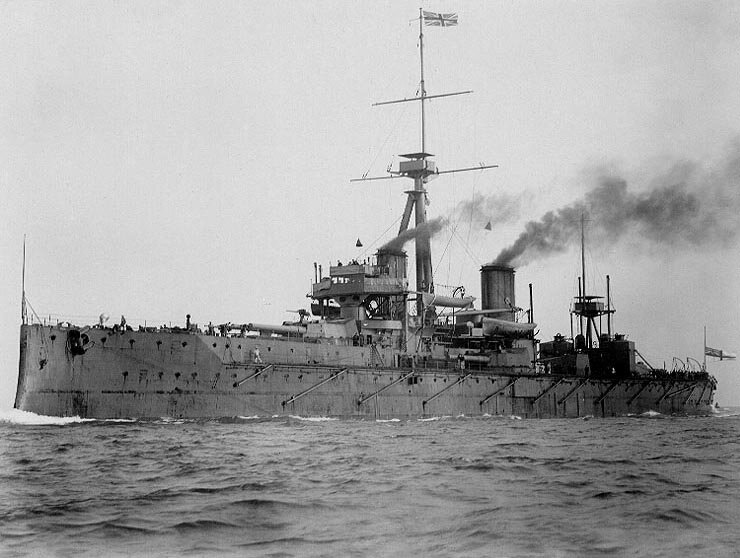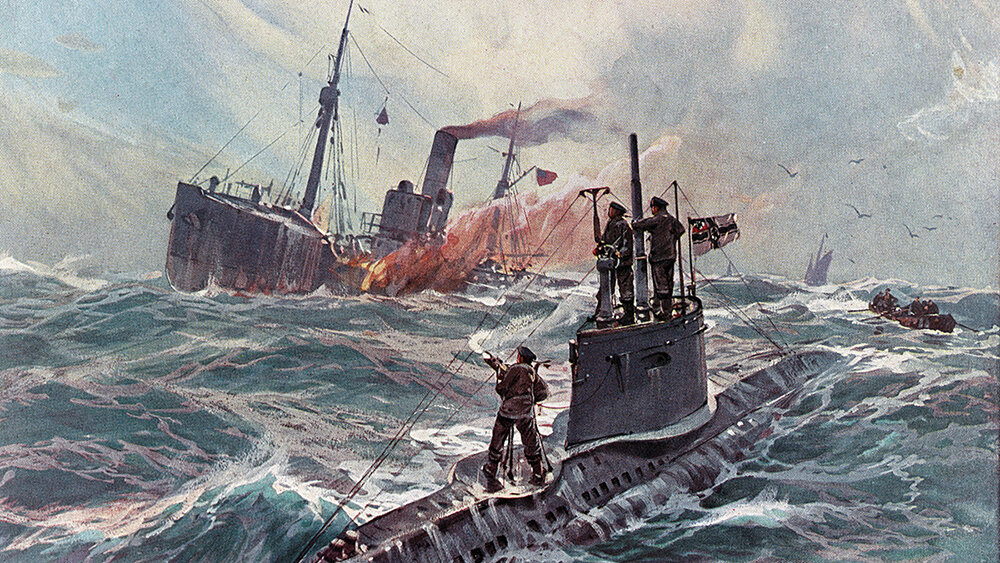By Lazar Berman
Clayton Christensen, the renowned Harvard Business School professor who passed away in January 2020, will be remembered for his groundbreaking book The Innovator's Dilemma. One of his signature contributions was the concept of disruptive innovation, the process by which small, poorly-funded, but nimble organizations surprise established companies and drive them out the market. A central dilemma Christensen lays out is that the same concepts of value and priorities that led to consistent success for major corporations are also the cause of their demise in the face of disruptors. While Christensen's theory was designed to help business leaders identify and defeat challengers, conventional militaries can also draw lessons from it in understanding how armed sub-state organizations are challenging them today. Israel faces a long-term challenge from Hamas and Hezbollah, who have managed to disrupt the Israel Defense Force repeatedly and pose an increasing threat over time. If Israel is to break this cycle—and restore its advantage over its enemies—it must recognize the phenomenon, revisit its concepts of value, and identify solutions that have been used to successfully counter disruptors.
This article will lay out the essentials of Christensen's theory, then apply it to military competition. It will present the World War I Atlantic U-Boat campaign and Hamas and Hezbollah's campaigns against Israel through the lens of disruptive innovation. Finally, it will offer approaches for the Israel Defense Force to guide responses to the challenge.
The Theory of Disruptive Innovation
The creation of new markets lies at the core of disruptive innovation. A company has two basic approaches to competition. On the one hand, it can present a head-to-head challenge against its rival in the same market, attempting to snatch market share by making a better or cheaper product. Small companies are generally unable to compete with large, established firms directly. "Incumbents almost always win battles of sustaining innovations. Their superior resources and well-honed processes are almost insurmountable strengths," write three leading management professors.[1] Sustaining innovation is producing incremental improvements to establish products and services along dimensions traditionally seen as valuable. Generally, companies "focus on matching and beating their rivals, and as a result their strategies tend to converge along the same basic dimensions of competition."[2] These competitors operate from the same implicit set of beliefs about how to compete in their industry. This competitive convergence causes firms to compete by making gradual improvements in cost and/or quality.[3]
Alternatively, a challenger can create new markets where its rival is barely—or not at all—present. Disruptors operate in this unoccupied territory that challenges the accepted boundaries of competition. Innovative companies often start at the low-end—selling to the poorest customers or creating inferior products that then climb up through the market to capture its higher end.
Disruptive Innovation Illustrated in Business
The history of American steel minimills is a prime example of the climb-up phenomenon. Minimills appeared in the 1960s, challenging huge integrated steel mills. They used small electric furnaces to melt down scrap metal, allowing them to be 20% more efficient, with the flexibility to match output to demand. Integrated steel mills, on the other hand, use massive blast furnaces to produce steel from raw materials, which are costly to heat up and cool down, meaning they must run continuously to be profitable and cannot be adjusted to meet changes in demand. Initially, steel from minimills was only acceptable to the low-quality rebar market. Integrated mills happily ceded the rebar market to the upstarts. Rebar profit margins were 7 percent, and only made up 4 percent of the steel produced. The integrated mills focused their efforts on higher-quality, more profitable steel products while minimills captured the rebar market. Eventually, rebar became so cheap that minimills had to move up in the market and make higher quality steel in the form of angle iron, where business margins were 12 percent. The integrated mills again left the market to focus on more profitable products. And again, the iron market collapsed, forcing the minimills to improve their products and move up in the market. This process repeated itself over a course of decades, with the minimills climbing up the steel market and finally driving the established firms to shutter their doors.[4]
It should be emphasized that at every point where integrated mill executives had to make a decision, they made perfectly reasonable choices. While choosing to maximize profits, they failed to recognize the trend. Disruptive innovations are rarely identified as serious challenges by their larger competitors until they have improved enough to disrupt the market.
Disruptive Innovation in Military Affairs
This pattern of disruption is not only relevant to competition in the business world. Weaker challengers have used it repeatedly throughout history to challenge more powerful rivals, and armed groups today have used disruptive innovation to great effect.

HMS Dreadnought underway, circa 1906-07 (U.S. Naval Historical Center/Wikimedia)
The German Navy's challenge to the British Royal Navy in World War I offers an excellent illustration of how a weaker upstart can achieve surprising success when it takes the competition to new markets. Germany was determined to secure prominence alongside European powers. That meant an empire, and an empire demanded a first-rate navy. Beginning in 1898, Germany set about building its surface fleet to rival the leading naval power, the United Kingdom.[5]
The British Admiralty, recognizing the challenge, set out to maintain its dominance. Its major coup was the HMS Dreadnought. The new warship rendered all previous classes obsolete. Germany tried to match the British Dreadnought construction, but was unable to keep pace. The Admiralty had prevailed in the head-to-head competition over the traditional measure of naval power, surface battleships.
Germany then turned to a realm where the British surface fleet was blind and helpless—underwater. While all leading navies had submarines, none recognized their potential like the Germans. The British, who had far more submarines than the Germans at the start of World War I, used them primarily as patrols to screen for their surface fleet. The German admirals understood that little vessels could be a strategic equalizer if they deployed their U-boats as hunters.[6]
Initially, the German concept was to use the submarines against the British surface fleet. In September 1914, one U-boat sank three British battleships in rapid succession.[7] While the approach achieved some early success this use of U-boats ultimately failed. So German commanders looked to the submarines to do to the British what the Grand Fleet was doing to them—starve the enemy homefront into submission.
Against merchant shipping the U-boats were vastly more destructive. The first two unrestricted campaigns saw 115 and 212 ships sunk, respectively. The third was the most effective. In February and March 1917 alone, U-boats sank 500 ships. The effort cut the number of merchant ships arriving at British ports by three quarters. It caused food rationing in Britain, even among its troops on the Western front. In the entire war, German U-boats sank more than 12 million tons of shipping, totaling around 5,000 ships.[8]

A 1916 depiction of a German submarine attacking an American merchant ship. (Willy Stower/Library of Congress)
This adaptation of submarines gave the German Navy a real opportunity to influence, perhaps decisively, the outcome of the war. But the Allies adapted quickly, and their technological and conceptual innovation enabled them to effectively counter the U-boat threat by 1918. The innovative German campaign stalled when it failed to respond to Allied innovations. It was a major strategic gamble. Germany needed its tactical and operational success to translate on the strategic level, but it ran out of time. The U-boat attacks brought America into the war before they forced the British to their knees.
Israel's enemies, on the other hand, have managed to tie tactical disruption to strategic success.
Hamas and Hezbollah as Disruptors
The U-boat effort reflects an approach that modern armed groups could use to fight more powerful state militaries. The campaigns of Hamas and Hezbollah against Israel are especially useful to illustrate the phenomenon. Instead of challenging Israel’s conventional force in traditional ways, Hamas and Hezbollah took the struggle to realms where state reach is barely present, if at all; from there, they could then climb up to pose greater and more traditional threats while maintaining better strategic coherence.
Hamas. In the 1990s, Hamas could carry out nothing more than isolated terrorist attacks against Israeli civilians. By the Second Intifada in 2000, it could ratchet up attacks by small squads against Israeli forces and civilians while also relying on scattered rocket and mortar fire in addition to their tactics of suicide bombings. After Israel's disengagement from the Gaza Strip in 2005, Hamas made the transition from a terrorist structure to a more traditional military one, with its own hierarchical territorial commands. While Hamas could not match the conventional might of the Israel Defense Force, it focused on developing an asymmetric rocket arsenal to get over the border fence, to which Israel had no ready response. By Operation Cast Lead in 2008-2009, Hamas was able to target southern Israel.

A rocket fired a rocket from the northern Gaza Strip toward southern Israel. (Oliver Weiken/EPA /LANDOV)
Eventually, in response to Hamas’ expanded rocket capabilities, Israel deployed the Iron Dome system in 2011. Hamas again innovated to another new market where Israel was without an operational response. During the 2014 Operation Protective Edge, Hamas surprised Israel with its use of attack and network of defense tunnels deep inside Gaza. While Israel knew Hamas had tunnels, it saw them as a tactical issue, and did not realize they represented the heart of Hamas's offensive effort.[9] Hamas fighters killed 67 Israeli Defense Force soldiers, and targeted Jerusalem and Tel Aviv with its expanded rocket capabilities.[10] Hamas even managed to shut down Israel's international airport for a day.[11] While Israel is developing responses to the tunnel threat, Hamas continues to look to climb up and present a greater challenge to Israel in new ways. It has thousands of Nukhba special forces fighters who are postured to penetrate Israel in the next round of fighting. Today, Hamas has grown to a force approximately 20,000 strong with thousands of special forces fighters. Hamas also strives to improve the accuracy of its rockets to disrupt life in Israel's center, while attacking Israeli towns with balloon-borne explosives that sneak below the response threshold of the Iron Dome.
Throughout this climb-up process, Hamas has stayed focused on its strategic goals. It gained control of the Gaza Strip, and has managed to wring concessions from Israel through indirect negotiations as the result of fighting in Gaza. Hamas has yet to achieve its long-term goals of securing an air and seaport, free movement in and out of Gaza, and ultimately replacing the Palestinian Authority as the representative of the Palestinians. Still, Hamas has managed to avoid provoking Israel into attempting to retake Gaza and topple its rule, while it develops its military deterrent.
Hezbollah. Hezbollah has followed a pattern similar to Hamas. In the 1980s and 1990s, while Israel occupied southern Lebanon, Hezbollah was largely a guerrilla force that also carried out terrorist attacks abroad. After Israel left Lebanon in 2000, Hezbollah moved up from a guerrilla force into a more formal military hierarchy. It developed a rocket array that shut down northern Israel during the 2006 war.[12] It has only grown in its threat since then. Now, Hezbollah leader Hassan Nasrallah talks about "conquering the Galilee" in the next war, and has precision missiles that can target strategic infrastructure across Israel. Meanwhile, in Syria, Hezbollah has learned to fight alongside conventional forces in offensive operations far from home. Hezbollah now coordinates with tactical air assets, creates long-range logistical networks, commands proxy forces, conducts urban warfare, and other indications of its continuing climb-up.[13]
Hezbollah has succeeded in becoming the dominant military and political force in Lebanon, while serving as Tehran's main proxy as it consolidates control of territory from Iran to the Mediterranean Sea. It has achieved significant deterrence against Israel, enabling It to focus on its own force buildup and on the Syria conflict.

Hezbollah supporters during a rally in 2015 (Anadolu)
Discussion
It is no coincidence these two organizations are pursuing parallel strategies. First, the resource and the technological disparity with Israel pushes them toward a convergent asymmetric strategy that seeks to fight where Israel's might is not well applied. Second, there is a process of mutual learning and imitation. Hamas and Hezbollah are pursuing what some have called the "Other Revolution in Military Affairs," a concept that relies on the underlying concept of America and Israeli “Revolution in Military Affairs.”[14] Advocates for this concept stress sub-state armed groups' focus on survivability in the face of Western conventional power, and on threats to the home front as part of an attrition strategy.[15] This idea, however, does not address the important climb-up phenomenon that the disruptive innovation framework captures.
Hamas and Hezbollah have moved up from terrorist squads to organized militaries that can shut down daily life in Israel, strike crucial infrastructure, and even consider invading Israel itself. Formerly Hamas and Hezbollah were poor upstarts, but have caused Israel to pull back from hostile territory and hang its hopes on increasingly expensive and complex technological solutions against relatively cheap and simple weapons.
The Israeli Defense Force should learn the lesson Christensen's disruptive innovation model reveals. It will not do to maintain the same concepts of what represents value in this type of competition, while Israel's enemies grow in their capabilities and the threat they pose in between rounds. Moreover, identifying the phenomenon and applying it to non-state enemies will enable Israel to conceptualize responses to it.
Since the disruptive innovation theory comes from the management world, it stands to reason that approaches for effective responses can be found in the same field. There are five general approaches from the management literature the Israeli military can choose:[16]
Invest in the traditional market. The first option is a renewed focus on existing strengths, emphasizing areas where weaker enemies cannot compete. This could include areas like airpower, armored units, the intelligence-strike complex, artificial intelligence, and other realms in which Hamas and Hezbollah cannot compete. This would mean that Israeli commanders do not recast their understanding of value.
Ignore the Disruptive Innovation. The second approach is to ignore the innovation altogether, with the understanding that it is not a threat to core interests.
Disrupt the Disruptor. Conventional militaries can also turn an upstart's challenge on its head, and disrupt the disruptor. For Israel, this could include turning Hamas tunnels––a disruption itself––into death traps for its fighters, or finding new markets where enemies are not able to mount a defense.
Play a Double Game. The fourth solution is to do two things simultaneously––to adopt the innovation, while at the same time continuing the familiar and established path. The Israel Defense Force could continue to develop services based on platforms and advanced technology, while imitating elements of enemy strategies and turning them on the disruptors.
Embrace Innovation and Amplify It. The fifth option is to adopt the innovation and scale it up. While Israel's enemies try to bring the fight to international forums like the International Criminal Court and the United Nations Human Rights Council, Israel has ramped up its lawfare efforts against the backers of Hezbollah and Hamas.[17]
Conclusion
Israel faces a challenge it has so far proven unable to solve. After successfully innovating against powerful conventional enemies, it has struggled to utilize its numerical and technological advantages against violent non-state organizations like Hamas and Hezbollah. While the Israel Defense Force continues to develop new methods and weaponry, it does not revisit the value it places on the development of platforms, led by the services. Meanwhile, the threat from Hamas and Hezbollah continues to grow. Both organizations feel they have achieved deterrence against the Jewish State.
Luckily for Israel, this is not the first time an established incumbent has faced a difficult challenge from an upstart disruptor. Studying Christensen's theory and applying them to military affairs will allow Israeli commanders to identify the phenomenon of disruptive innovation and to develop solutions that will restore Israel the advantage it once enjoyed.
No comments:
Post a Comment